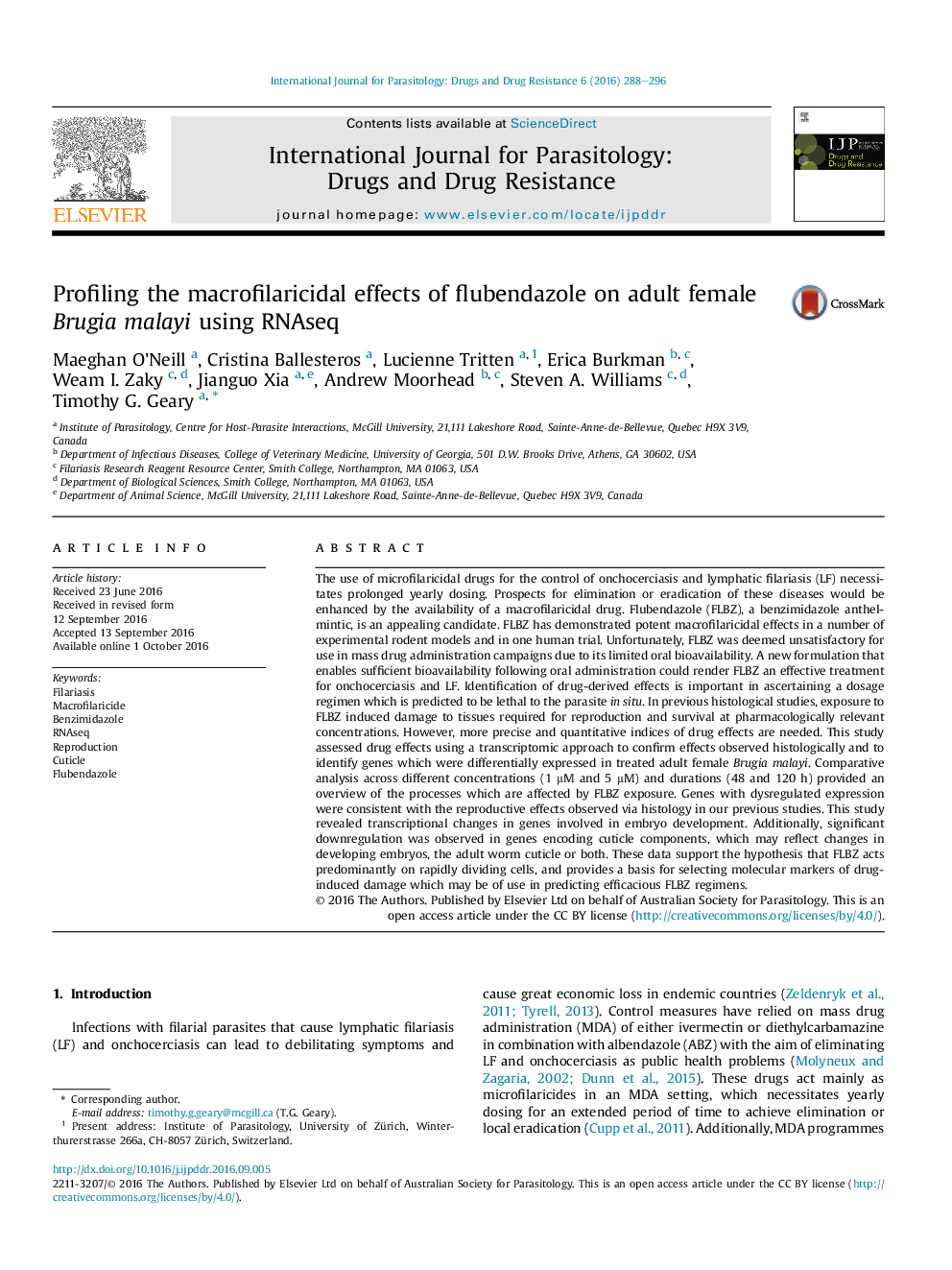| کد مقاله | کد نشریه | سال انتشار | مقاله انگلیسی | نسخه تمام متن |
|---|---|---|---|---|
| 6481769 | 1401036 | 2016 | 9 صفحه PDF | دانلود رایگان |

- Genes involved in development and cuticle synthesis were differentially expressed.
- Downregulation of adult cuticle genes suggests an alternate mechanism of action.
- One gene was identified as a possible FLBZ-specific marker of damage.
The use of microfilaricidal drugs for the control of onchocerciasis and lymphatic filariasis (LF) necessitates prolonged yearly dosing. Prospects for elimination or eradication of these diseases would be enhanced by the availability of a macrofilaricidal drug. Flubendazole (FLBZ), a benzimidazole anthelmintic, is an appealing candidate. FLBZ has demonstrated potent macrofilaricidal effects in a number of experimental rodent models and in one human trial. Unfortunately, FLBZ was deemed unsatisfactory for use in mass drug administration campaigns due to its limited oral bioavailability. A new formulation that enables sufficient bioavailability following oral administration could render FLBZ an effective treatment for onchocerciasis and LF. Identification of drug-derived effects is important in ascertaining a dosage regimen which is predicted to be lethal to the parasite in situ. In previous histological studies, exposure to FLBZ induced damage to tissues required for reproduction and survival at pharmacologically relevant concentrations. However, more precise and quantitative indices of drug effects are needed. This study assessed drug effects using a transcriptomic approach to confirm effects observed histologically and to identify genes which were differentially expressed in treated adult female Brugia malayi. Comparative analysis across different concentrations (1 μM and 5 μM) and durations (48 and 120 h) provided an overview of the processes which are affected by FLBZ exposure. Genes with dysregulated expression were consistent with the reproductive effects observed via histology in our previous studies. This study revealed transcriptional changes in genes involved in embryo development. Additionally, significant downregulation was observed in genes encoding cuticle components, which may reflect changes in developing embryos, the adult worm cuticle or both. These data support the hypothesis that FLBZ acts predominantly on rapidly dividing cells, and provides a basis for selecting molecular markers of drug-induced damage which may be of use in predicting efficacious FLBZ regimens.
Journal: International Journal for Parasitology: Drugs and Drug Resistance - Volume 6, Issue 3, December 2016, Pages 288-296